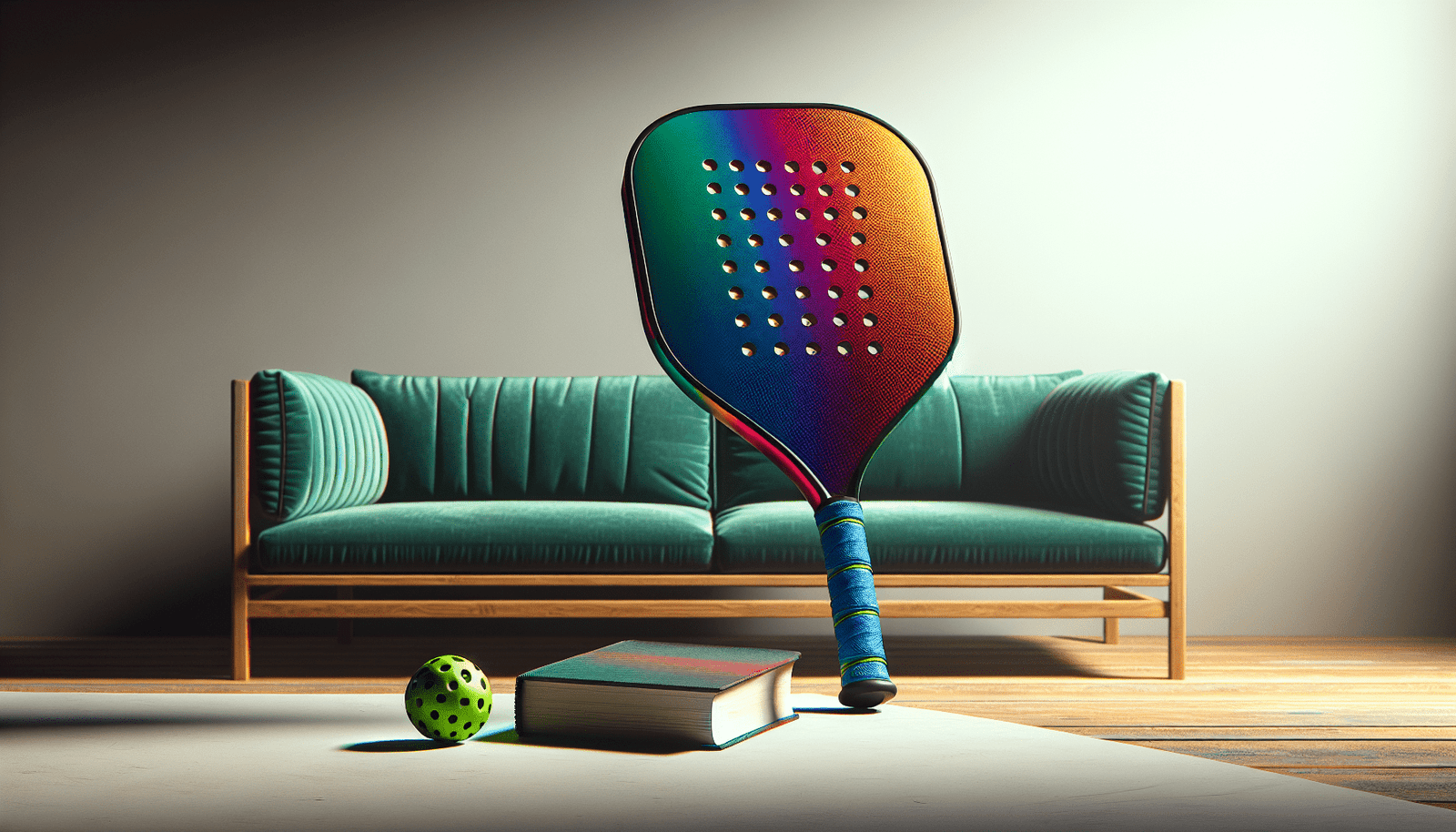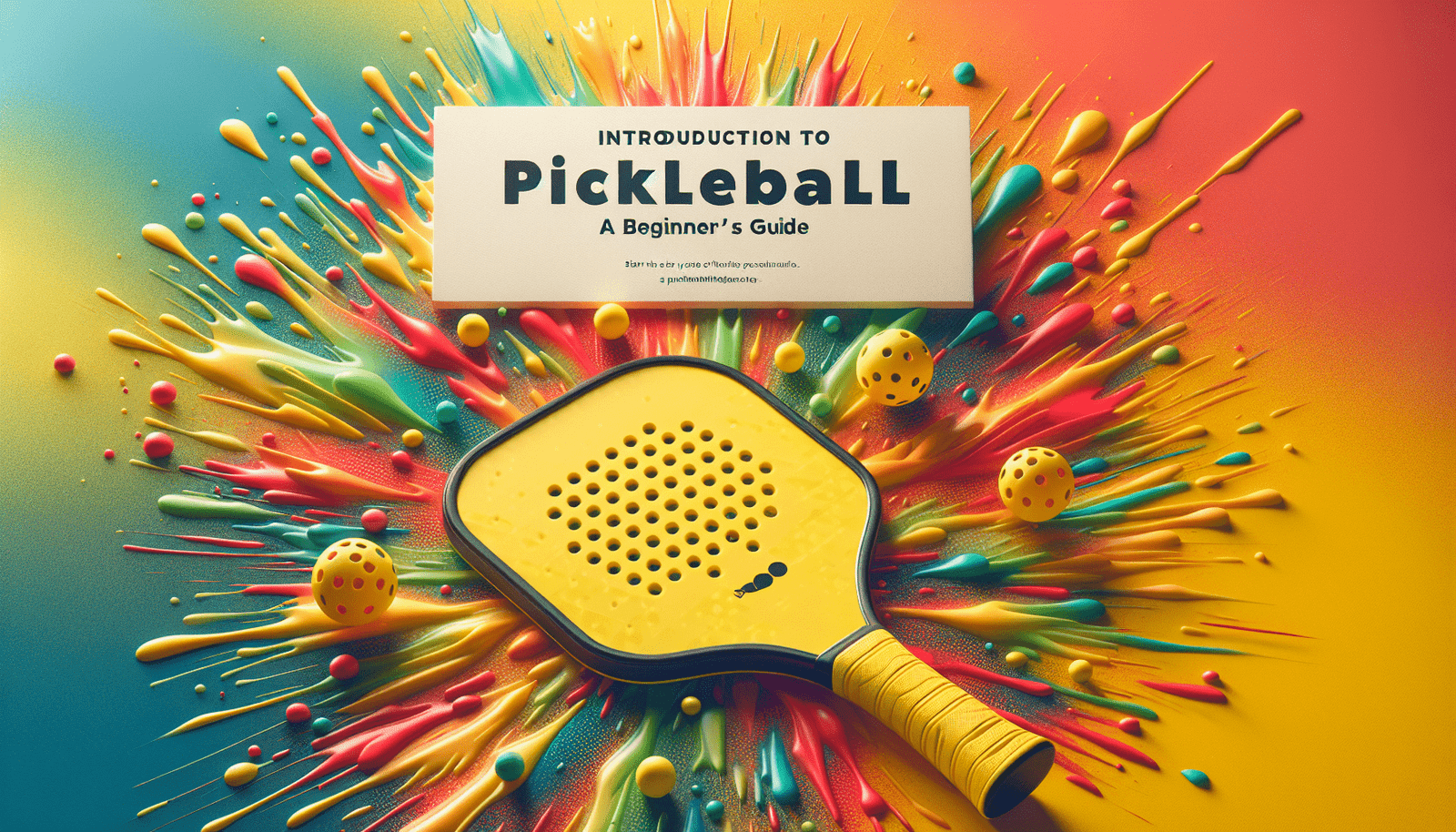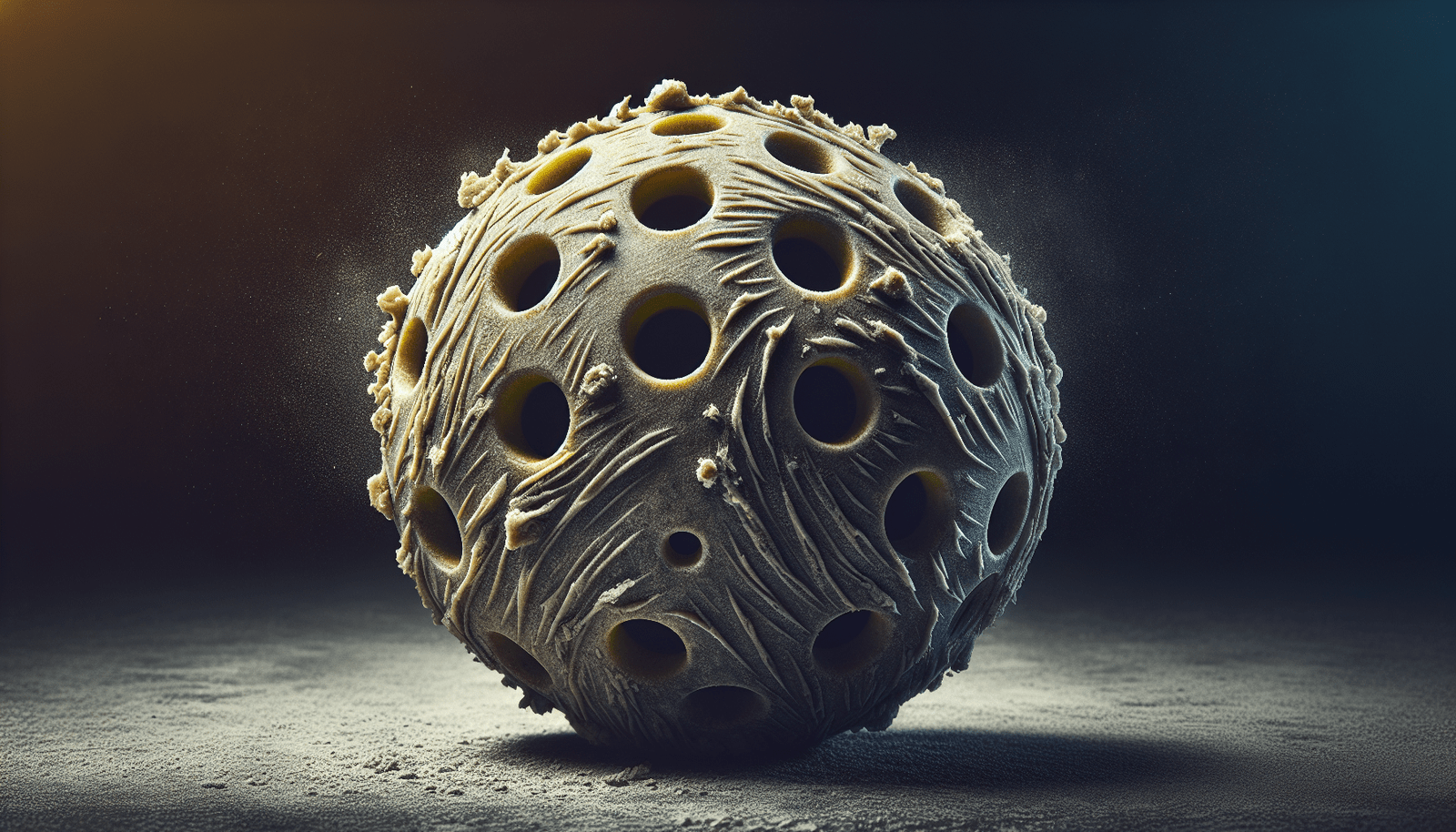Do you find yourself eagerly stepping onto the pickleball court, paddle in hand, ready to take on your opponents with enthusiasm? If so, then you may be interested in diving deeper into the intricate world of pickleball by learning about its fascinating anatomy. In this comprehensive guide, we will explore the concept of “counting holes” in pickleball, unraveling the secrets behind this unique sport and helping you gain a deeper understanding of the game. So, let’s embark on this journey together and discover the hidden intricacies that make pickleball so captivating.
What is Pickleball
Pickleball is a fun and fast-paced paddle sport that combines elements of tennis, badminton, and ping pong. It is played on a smaller court with a low net, making it accessible to players of all ages and skill levels. The game is typically played with two to four players, who use a paddle to hit a plastic ball over the net. The objective of pickleball is to score points by hitting the ball in a way that the opponent is unable to return it.
Definition of Pickleball
Pickleball is a paddle sport that originated in the United States. It is played on a court similar to a tennis court, but with smaller dimensions. The game is played with a paddle and a plastic ball, which is hit over the net. The rules of pickleball are similar to other racket sports, but with some unique twists and modifications.
Origin of Pickleball
Pickleball was invented in 1965 by Joel Pritchard, a congressman from Washington state, and his friend Barney McCallum. The game was created as a way to keep their families entertained during a summer weekend. The name “pickleball” is said to have originated from the Pritchard family’s dog, whose name was Pickles. According to the Pritchard family, the dog would often run off with the ball during the game, hence the name “pickleball”.
Rules and Objectives of Pickleball
The objective of pickleball is to score points by hitting the ball in a way that the opponent is unable to return it successfully. The game is played on a court with a net in the middle. Players use a paddle to hit the ball over the net, and the ball must clear the net and land within the boundary lines to be considered in play. The rules of pickleball dictate how the game is played, including serving, scoring, and the boundaries of the court.
Understanding the Anatomy of a Pickleball
Introduction to Pickleball Construction
Pickleballs are typically made of a hard plastic material, which ensures durability and longevity. The construction of a pickleball is designed to provide optimal performance and playability. Understanding the anatomy of a pickleball can help players make informed decisions when selecting the right ball for their game.
Materials Used in Pickleball Construction
Pickleballs are made using a variety of materials, including polymers and plastics. These materials are chosen for their durability, performance, and ability to withstand the rigors of gameplay. The specific composition of the materials can vary depending on the brand and type of pickleball.
Exploring the Structure and Components of a Pickleball
A pickleball consists of several components that work together to create its unique characteristics. The outer shell of the ball is typically smooth and provides a consistent surface for gameplay. Inside the shell, there is a hollow core that helps regulate the ball’s bounce and weight. The number and arrangement of the holes in the ball also play a crucial role in its performance.
Counting Holes in Pickleball
Why Counting Holes is Important
Counting the number of holes in a pickleball is important because it can provide valuable information about the ball’s characteristics and performance. The number of holes affects the ball’s weight, aerodynamics, and bounce. By understanding the hole count, players can choose a pickleball that aligns with their playing style and preferences.
The Significance of Hole Patterns
In addition to the number of holes, the pattern in which they are arranged on a pickleball also affects its performance. Different hole patterns can alter the ball’s spin, trajectory, and aerodynamics. Understanding the significance of different hole patterns can help players make informed decisions when selecting a pickleball.
How to Count Holes in Pickleball
Counting the holes in a pickleball is a relatively simple process. To count the holes, hold the ball in your hand and visually inspect the outer surface. Each hole should be counted individually. It’s important to note that some pickleballs may have smaller holes that are not easily visible, so it’s essential to be thorough in your inspection.
Different Types of Hole Configurations
There are several common hole configurations in pickleballs. The most common is the standard hole pattern, which consists of evenly spaced circular holes covering the entire surface of the ball. Other configurations include hexagonal patterns, circular patterns, and custom hole patterns. Each configuration offers its own unique characteristics and performance attributes.
Factors Affecting Hole Count
Size and Diameter of Pickleball
The size and diameter of a pickleball can impact the hole count. Generally, smaller pickleballs tend to have more holes, as they require more surface area for effective playability. Larger pickleballs, on the other hand, may have fewer holes to provide a balance between weight and aerodynamics.
Manufacturing Techniques
The manufacturing techniques used to produce pickleballs can also affect the hole count. Different manufacturers may use various molding and production methods, resulting in variations in the number and arrangement of the holes. It’s important to consider the manufacturer’s reputation and quality standards when selecting a pickleball.
Effects of Usage and Age
As pickleballs are used and age over time, they may experience wear and tear, which can affect the hole count. Frequent play can cause the holes to become enlarged or damaged, resulting in changes in the ball’s performance. It is essential to regularly inspect and replace pickleballs to maintain consistent gameplay.
Measuring the Performance of Different Hole Patterns
Impact of Hole Patterns on Ball Speed
The hole pattern in a pickleball can significantly impact its speed. Different hole patterns create varying levels of drag and airflow, which can either increase or decrease ball speed. A tighter hole pattern may result in a faster ball, while a looser pattern may slow it down. Players can use this knowledge to optimize their gameplay and adapt their strategies accordingly.
Spin Generation and Control
The hole pattern of a pickleball can also affect the generation and control of spin. Certain hole patterns create more friction with the paddle, allowing players to generate greater spin on the ball. The arrangement and size of the holes can influence how the ball interacts with the paddle and the resulting spin. This can have a significant impact on shot accuracy and gameplay tactics.
Aerodynamics and Ball Trajectory
The hole pattern in a pickleball plays a crucial role in its aerodynamics and ball trajectory. Different patterns can alter the way the ball moves through the air, resulting in variations in its flight path. Some hole patterns may provide more stability and a predictable trajectory, while others may create more unpredictable movements. Understanding these aerodynamic characteristics can help players anticipate and react to the ball’s behavior.
Popular Hole Patterns in Pickleball
Standard Hole Pattern
The standard hole pattern is the most common configuration found in pickleballs. It consists of evenly spaced circular holes covering the entire surface of the ball. This hole pattern provides a balanced combination of speed, spin, and trajectory. It is a versatile option that is suitable for players of all skill levels.
Hexagonal Hole Pattern
The hexagonal hole pattern features holes arranged in a hexagonal grid-like pattern. This configuration creates a larger surface area for airflow, allowing for increased ball speed. The hexagonal pattern also enhances spin generation and control. Players who prefer a faster-paced game and enjoy generating spin often gravitate towards pickleballs with a hexagonal hole pattern.
Circular Hole Pattern
The circular hole pattern is characterized by larger, circular holes scattered across the surface of the ball. This pattern reduces drag, resulting in higher ball speed. However, it may sacrifice some spin control due to the larger hole size. Players who prioritize speed and power over spin often prefer pickleballs with a circular hole pattern.
Custom Hole Patterns and Experimental Designs
In addition to the standard, hexagonal, and circular hole patterns, there are also custom hole patterns and experimental designs available. These unique configurations offer players the opportunity to explore different performance characteristics and tailor their gameplay to their specific preferences. These custom designs often incorporate advanced aerodynamic principles and cutting-edge technologies.
Choosing the Right Hole Pattern for Your Playstyle
Factors to Consider When Selecting a Hole Pattern
When choosing a hole pattern for your pickleball, several factors should be considered. These factors include your playing style, skill level, desired ball speed and control, and personal preferences. It’s important to select a hole pattern that aligns with your individual needs and will enhance your overall gameplay experience.
Effects of Different Hole Patterns on Game Strategy
Different hole patterns can significantly impact your game strategy. For example, a tighter hole pattern may allow for more spin control and precision shots, while a looser pattern may prioritize speed and power. Understanding how different hole patterns affect your style of play can give you a competitive edge and help you develop effective game strategies.
Personal Preferences and Skill Level
Ultimately, your personal preferences and skill level should play a significant role in choosing the right hole pattern for your playstyle. Experimenting with different hole patterns can help you determine which one feels most comfortable and enhances your gameplay. It’s essential to balance your preferences with your skill level to ensure a challenging yet enjoyable playing experience.
Maintaining and Inspecting Pickleballs
Cleaning and Care Tips
To maintain the performance and lifespan of your pickleballs, proper cleaning and care is essential. Pickleballs can be cleaned using warm, soapy water and a soft cloth or sponge. Avoid exposing pickleballs to extreme temperatures or excessive moisture. Additionally, store them in a dry and cool location to prevent damage.
Checking for Damage and Wear
Regularly inspecting pickleballs for damage and wear is crucial to ensure consistent gameplay. Check for cracks, dents, or significant changes in the hole count. If a pickleball shows signs of excessive wear or damage, it is recommended to replace it to maintain the integrity of the game.
Replacing Pickleballs
Pickleballs are not indestructible and will eventually wear out over time. It is important to replace pickleballs as needed to maintain fair and consistent gameplay. When replacing pickleballs, consider the same factors you used when selecting the original balls, such as hole pattern, material, and performance characteristics.
Pickleball Standards and Regulations
Official Ball Requirements
Official pickleball standards set by various governing bodies outline the specific requirements for pickleballs used in official tournaments and matches. These requirements include regulations regarding size, weight, bounce, and hole count. It is important to select and use pickleballs that meet these standards to ensure fair and equitable gameplay.
Tournament Regulations
Pickleball tournaments often have their own specific regulations regarding ball selection, including the allowed hole patterns and specific ball brands that can be used. It is important to familiarize yourself with these regulations to avoid any disqualification or penalty during tournament play.
Pickleball Associations and Organizations
There are several pickleball associations and organizations that govern the sport and establish industry standards. These organizations, such as the USA Pickleball Association (USAPA), provide resources, guidance, and support to players, as well as establish and enforce pickleball regulations. Staying informed and involved with these associations can help players stay up-to-date with the latest advancements and developments in pickleball standards.
Conclusion
Summary of Pickleball Hole Counting
Counting the holes in a pickleball is an important aspect of understanding the ball’s characteristics and performance. The hole count, along with the hole pattern, affects the ball’s speed, spin, and trajectory. By counting holes and exploring different hole patterns, players can select pickleballs that align with their playing style and enhance their overall gameplay experience.
Importance of Hole Patterns in Pickleball
Hole patterns play a significant role in pickleball, impacting factors such as ball speed, spin generation, and control, and aerodynamics. Different hole patterns offer players various performance characteristics and allow for the customization of gameplay strategies. Understanding the importance of hole patterns can help players make informed decisions when selecting pickleballs.
Future Developments and Innovations in Pickleball Design
As pickleball continues to grow in popularity, there is a potential for future developments and innovations in pickleball design. Manufacturers and designers are constantly exploring new materials, hole patterns, and technologies to improve performance and enhance the overall pickleball experience. Keeping up with these advancements can help players stay at the forefront of the sport and adapt to new possibilities.




